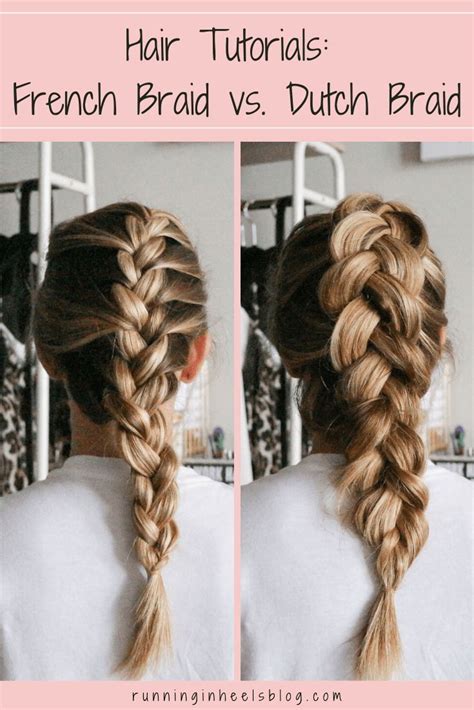Introduction
Braiding is a timeless hair-styling technique that has adorned heads for centuries. Among the most popular braiding styles are the Dutch braid and the French braid. Both create striking and versatile looks, but their techniques and aesthetic appeal differ significantly.

Dutch Braid
How to Braid a Dutch Braid:
- Start with brushed, slightly damp hair.
- Section off a small piece of hair at the crown and divide it into three strands.
- Cross the left strand over the middle strand, then cross the right strand over the new middle strand.
- Add hair from the left side and cross it under the left strand.
- Add hair from the right side and cross it under the right strand.
- Repeat steps 4-5, weaving in fresh strands of hair as you go down the scalp.
- When you reach the nape, braid the remaining hair like a regular three-strand braid.
- Secure the end with an elastic band.
Characteristics:
- Tightly woven: Dutch braids create a snug, raised effect.
- Reverse French braid: Unlike French braids, Dutch braids cross strands under instead of over.
- Textured and voluminous: The weaving technique results in a textured, voluminous look.
French Braid
How to Braid a French Braid:
- Brush and slightly dampen hair.
- Section off a small piece of hair at the crown and divide it into three strands.
- Cross the right strand over the middle strand, then cross the left strand over the new middle strand.
- Add hair from the left side and cross it over the left strand.
- Add hair from the right side and cross it over the right strand.
- Repeat steps 4-5, weaving in fresh strands of hair as you go down the scalp.
- When you reach the nape, braid the remaining hair like a regular three-strand braid.
- Secure the end with an elastic band.
Characteristics:
- Loosely woven: French braids create a softer, more relaxed effect.
- Forward French braid: Unlike Dutch braids, French braids cross strands over instead of under.
- Elegant and timeless: French braids evoke a classic, refined look.
Dutch vs French Braid Comparison
| Feature | Dutch Braid | French Braid |
|---|---|---|
| Technique | Cross strands under | Cross strands over |
| Effect | Tightly woven, voluminous | Loosely woven, elegant |
| Difficulty | More complex | Easier to master |
Applications and Styling
Dutch Braids:
– Formal events: Create a sophisticated and striking look for weddings, proms, or other special occasions.
– Athletic activities: Keep hair secure and out of the way during sports or workouts.
– Accents: Add a Dutch braid as a partial accent to add texture and interest to open hairstyles.
French Braids:
– Casual wear: Create a chic and effortless everyday look.
– Romantic updos: Incorporate French braids into buns, chignons, or half-up hairstyles for a touch of elegance.
– Accessory integration: Adorn French braids with hair clips, ribbons, or flowers to create unique and personalized styles.
Strategies for Mastering Dutch and French Braids
- Practice regularly: The key to mastering these braids is repetition. Practice on yourself, friends, or a mannequin.
- Use a mirror: A mirror helps you visualize your progress and correct any mistakes.
- Tension control: Adjust the tension of the braids to achieve the desired effect. Tighten for a Dutch braid and loosen for a French braid.
- Experiment with different styles: Try incorporating Dutch or French braids into various hairstyles to find the ones that flatter your face shape and hair texture.
Conclusion
The Dutch braid and the French braid offer distinct charms and applications. Whether you prefer the tightly woven texture of a Dutch braid or the elegant simplicity of a French braid, embracing the versatility of these iconic hairstyles empowers you to express your unique style. With a little practice and creativity, you can master these braiding techniques and elevate your hair game to new heights.
